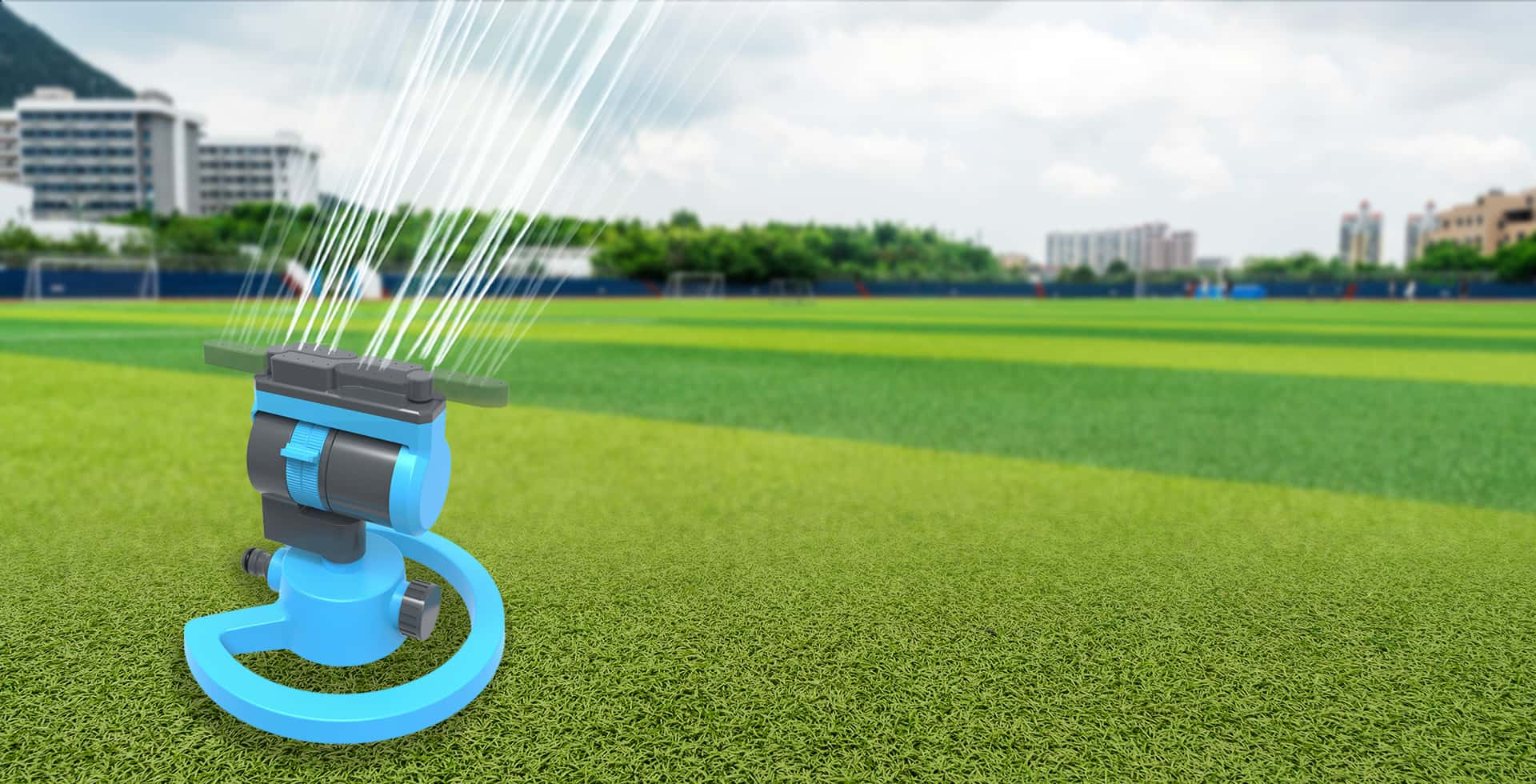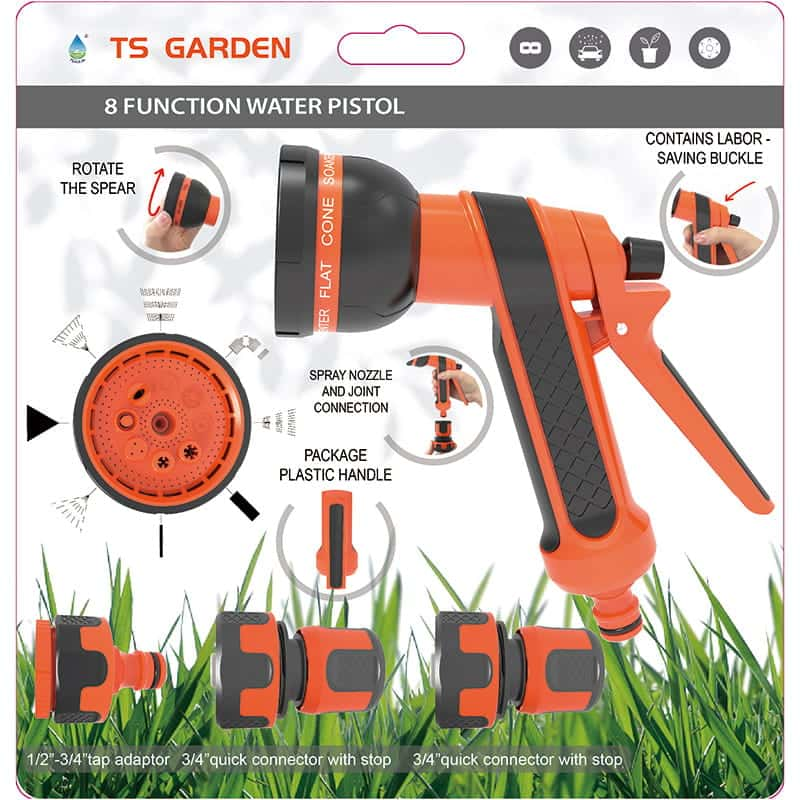- All Reserved. © 2019
- Cixi Tianshuo Industry and Trade Co., Ltd.
- Web support by : HWAQ
Irrigation is an indispensable part of the garden. Comm […]
Irrigation is an indispensable part of the garden. Commonly used irrigation techniques include the following: flood irrigation, sprinkler irrigation, micro-sprinkler irrigation, drip irrigation, and tube irrigation (manually dragged rubber tube irrigation). In some places, methods such as infiltration irrigation and fog irrigation have also appeared.
Flood irrigation: refers to a method in which irrigation water is used to moisturize the soil with the help of the gravity and capillary action of the water itself during the flow of irrigation water on the planting plot, or to establish a certain depth of water layer on the plot and infiltrate into the soil by gravity. The method is simple to operate, has low water utilization, wastes water resources, and severely damages the soil structure.

Sprinkler irrigation: Sprinkler irrigation is an irrigation method in which water with a certain pressure is sprayed onto the planting plots to form fine water droplets and scattered on the land. Sprinkler irrigation is composed of pressure water source, water pipeline and sprinkler. Sprinkler irrigation is a relatively advanced method. According to the sprinkler structure, the current sprinkler irrigation includes underground telescopic sprinklers for gardens, plunger rocker sprinklers, and plastic micro sprinklers. The installation, construction and maintenance of sprinkler irrigation are more complicated; because the range of conventional sprinkler irrigation nozzles is large, the coverage area is generally more than 7 meters, so this method is generally only used in large lawns
Micro-sprinkler irrigation: refers to a sprinkler irrigation system with a single nozzle range or coverage area below 4 meters. The advantages of micro-sprinkler irrigation are that the range of the nozzle is small, the flow rate is low, and the irrigation is even.
Advantages: Micro-sprinkler irrigation has low working pressure and low flow rate, which can increase soil moisture regularly and quantitatively, increase air humidity, and regulate local microclimate.
Disadvantages: The installation is complicated, and the sprinklers and water pipes are generally exposed on the ground, which is not beautiful and not easy to manage and maintain.
Pipe irrigation: a method that relies on manual dragging of flexible hoses to direct irrigation water to the planting plots. This method is simple to operate, and the effect is better than flood irrigation. This method requires very high technical experience of workers, and the workload of workers is very large; the effect of irrigation is completely dependent on the experience of workers. Irrigation water is prone to uneven distribution and large water waste. Generally, the irrigation water is excessive, the impact of water on the soil and crops is too strong, and the soil structure is seriously damaged. Since there has been no professional irrigation equipment for villa courtyards in the past, traditional garden irrigation equipment is too simple and rough to meet the requirements of use, so this method is still widely used in villa areas and living quarters.

Drip irrigation: Drip irrigation is an irrigation method in which irrigation water with a certain pressure is dripped into the soil near the roots of plants through pipes and pipe drippers.
advantage:
1. Improve quality, increase production and efficiency
2. Maintain the soil structure.
3. Control temperature and humidity.
4. Save water, labor, fertilizer, and even irrigation, which is beneficial to maintain soil aggregate structure and plant absorption.
Disadvantages:
1. The installation is more complicated, and the dripper is easy to be blocked and difficult to maintain.
2. Easy to cause blockage.
3. May cause salt accumulation.
4. It may limit the development of root system.
Infiltration irrigation: It is a method of slowly infiltrating the irrigation water in the pipe into the water absorption layer of the crop roots through the underground permeable pipe buried in the soil.
The main advantages of infiltration irrigation are:
①The soil remains loose after irrigation, does not damage the soil structure, does not produce soil surface compaction, and provides good soil moisture for crops;
②Low surface soil moisture can reduce ground evaporation;
③ The pipeline is buried underground, which can reduce the land occupation, facilitate transportation and field operations, and can carry out irrigation and agricultural activities at the same time;
④The irrigation amount is low and the irrigation efficiency is high;
⑤It can reduce the growth of weeds and plant diseases and insect pests;
⑥ Infiltration irrigation system has small flow and low pressure, so it can reduce power consumption and save energy.